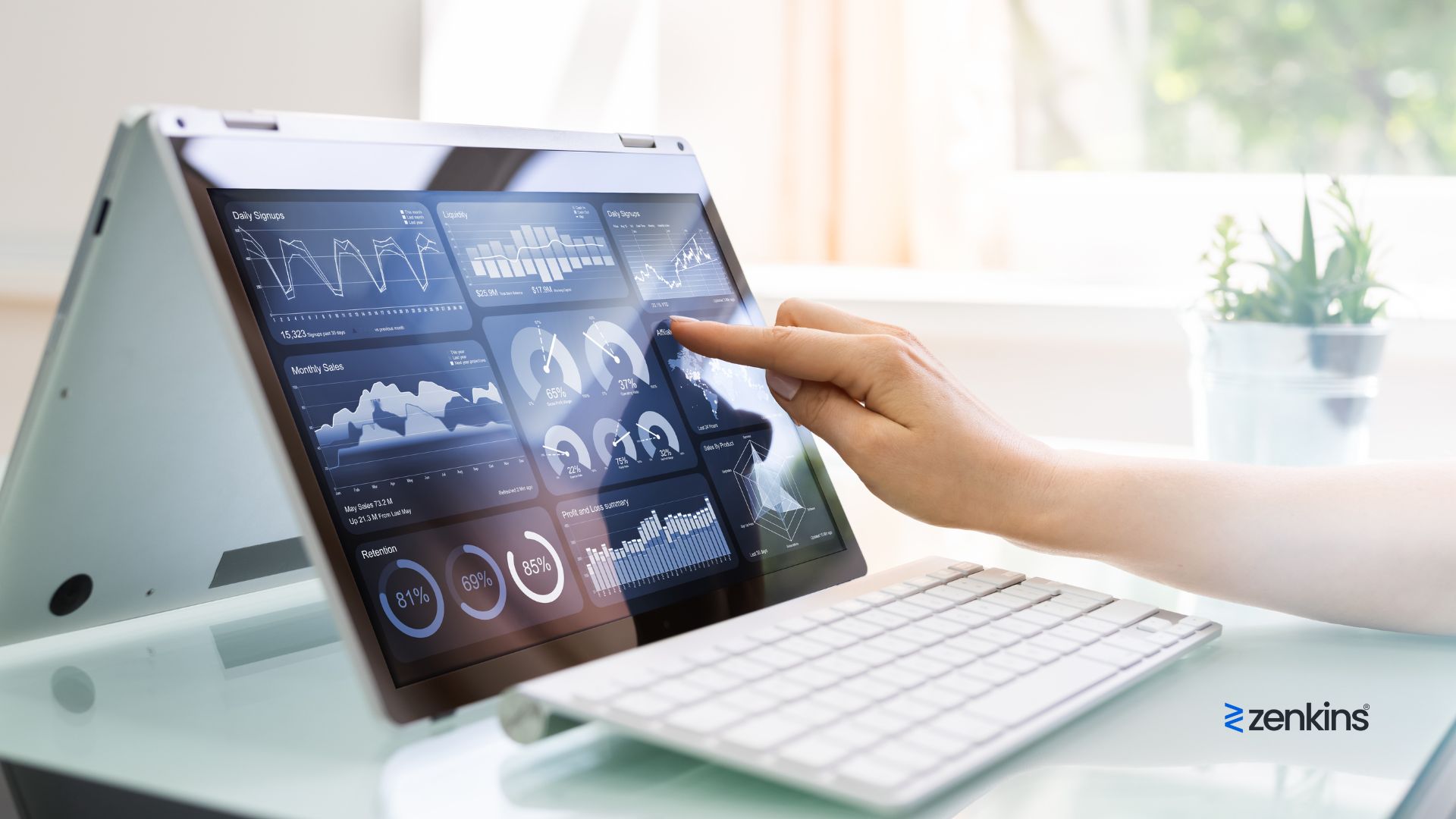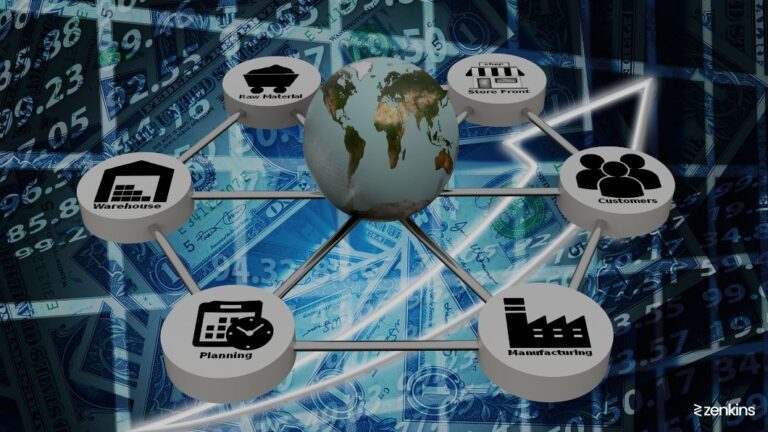The world of software development is in the midst of a technological revolution, with groundbreaking advancements shaking up the entire industry. From AI-powered testing and debugging tools to cloud-based deployment and collaboration platforms, the options available to developers have never been more impressive. The rise of DevOps methodologies is also transforming the way teams work together, allowing for seamless integration and real-time feedback. And let’s not forget about containerization and microservices architecture, which are providing greater flexibility and scalability than ever before. In short, it’s an exciting time to be a software developer – as long as you’re willing to keep up with the constantly changing landscape!
Introduction to emerging technologies revolutionizing software development
As technology rapidly evolves, it becomes paramount to be aware of new and upcoming trends and tools, which can enhance the efficiency and effectiveness of software development processes. These emerging technologies encompass various areas such as artificial intelligence, blockchain, cloud computing, and Internet of Things (IoT), among others. By acquiring knowledge about these cutting-edge developments, professionals can harness their potential to create innovative solutions that meet diverse user needs. Moreover, understanding emerging technologies allows professionals to leverage them appropriately within software development projects by leveraging their strengths while also mitigating possible risks and challenges.
1. Artificial intelligence and machine learning
Artificial Intelligence (AI) and Machine Learning (ML) are two interrelated fields that have gained significant traction in recent years and are revolutionizing various aspects of software development.
AI refers to the development of computer systems that can perform tasks that typically require human intelligence, such as understanding natural language, recognizing images, and making decisions. It encompasses techniques like machine learning, natural language processing, computer vision, and expert systems.
Machine Learning, on the other hand, is a subset of AI that focuses on enabling computer systems to learn from data and improve their performance without being explicitly programmed. ML algorithms analyze and recognize patterns in large datasets to make predictions, classifications, and decisions. It can be further categorized into supervised learning, unsupervised learning, and reinforcement learning.
The impact of AI and ML in software development is profound. They are being used to automate various tasks and enhance efficiency. For instance, developers can leverage ML algorithms to automate code generation, reducing the time and effort required to write repetitive or boilerplate code. Additionally, AI-powered tools can assist in code debugging, identifying bugs, and suggesting fixes, thereby improving the software development process. It enable intelligent decision-making and personalization. By analyzing user data and behavior patterns, software can provide personalized recommendations, optimize user interfaces, and deliver tailored experiences. This helps create more engaging and user-centric applications. AI and ML are also utilized for software testing and quality assurance. ML algorithms can learn from historical testing data and identify patterns of defects or anomalies, enabling more effective testing and bug detection. AI and ML are transforming industries through the development of intelligent systems and applications. Examples include voice assistants like Siri and Alexa, recommendation engines on e-commerce platforms, fraud detection systems in finance, and autonomous vehicles.
2. Blockchain technology for secure data management
Blockchain technology has emerged as a groundbreaking solution for secure data management. It is a decentralized and immutable ledger that allows the secure and transparent recording of transactions and data. Unlike traditional centralized databases, blockchain operates on a distributed network of computers (nodes) where each participant maintains a copy of the ledger. This ensures that no single entity has control over the data, enhancing security and trust.
Here’s how blockchain ensures secure data management:
- Decentralization: Blockchain eliminates the need for a central authority to control and validate transactions. Instead, transactions are verified by consensus among the network participants. This decentralized nature reduces the risk of data manipulation, hacking, or single points of failure.
- Immutability: Once data is recorded on the blockchain, it cannot be altered or tampered with. Each new transaction is cryptographically linked to previous transactions, creating a chain of blocks. This immutability ensures data integrity and prevents unauthorized modifications.
- Cryptographic Security: Blockchain uses advanced cryptographic algorithms to secure data. Transactions are digitally signed, ensuring that they can be verified and authenticated. Additionally, encryption techniques protect the confidentiality of sensitive information stored on the blockchain.
- Transparency: Blockchain provides transparency by allowing all network participants to view and verify the transactions. This transparency enhances trust among stakeholders and enables auditing and accountability.
- Consensus Mechanisms: Blockchain employs consensus mechanisms, such as Proof of Work (PoW) or Proof of Stake (PoS), to validate and agree upon transactions. These mechanisms prevent malicious actors from altering the data and ensure the accuracy and integrity of the ledger.
- Smart Contracts: Blockchain platforms often support smart contracts, which are self-executing contracts with predefined rules and conditions. Smart contracts automate and enforce agreements, eliminating the need for intermediaries and reducing the risk of fraud or manipulation.
3. Quantum computing for faster processing power
Quantum computing holds the promise of delivering significantly faster processing power compared to traditional computers. While classical computers store and process information using bits that represent either a 0 or a 1, quantum computers leverage quantum bits, or qubits, which can exist in multiple states simultaneously due to a property called superposition.
Here’s how quantum computing enables faster processing:
- Parallelism: Quantum computers can perform calculations on multiple qubits simultaneously, exploiting the concept of superposition. This parallelism allows for the exploration of multiple solutions or possibilities simultaneously, potentially leading to faster problem-solving and computational speedup for certain types of problems.
- Quantum Supremacy: Quantum computers have the potential to achieve quantum supremacy, surpassing classical computers in solving specific problems. This means that for certain computational tasks, quantum computers can provide results significantly faster than classical computers, even with exponentially increasing problem sizes.
- Quantum Algorithms: Quantum algorithms, such as Shor’s algorithm for factoring large numbers and Grover’s algorithm for database searching, have demonstrated the potential for exponential speedup compared to their classical counterparts. These algorithms leverage the unique properties of quantum systems to solve complex problems more efficiently.
- Optimization and Simulation: Quantum computing is particularly well-suited for optimization and simulation problems. For example, it can be utilized to optimize supply chains, financial portfolios, or energy consumption. Additionally, quantum simulation can enable the study of quantum systems and materials, offering insights that are challenging for classical computers to achieve.
- Cryptography and Security: Quantum computing also has implications for cryptography and security. Shor’s algorithm, mentioned earlier, has the potential to break widely used encryption schemes, such as RSA and elliptic curve cryptography. As a result, the development of quantum-resistant encryption algorithms is a key area of research to ensure secure communications in a post-quantum computing era.
4. Augmented reality and virtual reality for immersive experiences
Augmented Reality (AR) and Virtual Reality (VR) are transformative technologies that offer immersive experiences, enabling users to interact with virtual content and environments in new and captivating ways.
Augmented Reality: AR enhances the real-world environment by overlaying digital information, such as images, videos, or 3D models, onto the user’s view of the physical world. This blending of virtual and real elements creates an augmented experience. AR can be experienced through smartphones, tablets, smart glasses, or specialized AR devices.
Key aspects of AR include:
- Real-time Interaction: AR enables users to interact with virtual objects in real-time, creating a sense of immersion and engagement. Users can manipulate and manipulate virtual content, making AR valuable for training simulations, design visualization, and educational applications.
- Contextual Information: AR can provide users with contextual information about their surroundings. For example, pointing a smartphone at a landmark can display historical facts or overlay directions. This integration of real-world context with digital information enhances user experiences and aids in information retrieval.
- Enhanced Visualization: AR allows users to visualize objects or data in a more intuitive and meaningful way. For instance, in architecture and interior design, AR can project virtual furniture or decor into a physical space, allowing users to see how they fit before making a purchase.
Virtual Reality: VR creates a completely immersive, computer-generated environment that users can perceive and interact with. By wearing a VR headset or using other specialized equipment, users are transported to a virtual world, blocking out the physical surroundings.
Key aspects of VR include:
- Immersive Environment: VR provides a simulated environment that can replicate real-world settings or transport users to imaginative and fantastical worlds. Users can explore, interact, and manipulate objects within the virtual environment, fostering a heightened sense of presence and immersion.
- Sensory Engagement: VR engages multiple senses, including vision, hearing, and sometimes touch, to create a rich and convincing experience. This multi-sensory engagement contributes to the feeling of “being there” within the virtual world.
- Applications across Industries: VR finds applications in various fields, such as gaming, entertainment, education, healthcare, and training. It enables realistic simulations, virtual tours, skill development, therapeutic experiences, and more.
5. Internet of Things (IoT) for connected devices and data collection
The Internet of Things (IoT) refers to the network of interconnected physical devices embedded with sensors, software, and connectivity capabilities that enable them to collect and exchange data. These devices can range from everyday objects like household appliances and wearables to industrial machinery and infrastructure.
IoT enables the seamless integration of the physical and digital worlds, creating a network of smart devices that can communicate and interact with each other autonomously or with human intervention. Here’s how IoT facilitates connected devices and data collection:
- Connectivity and Communication: IoT devices are equipped with various communication technologies such as Wi-Fi, Bluetooth, Zigbee, or cellular networks, enabling them to connect to the internet and exchange data. This connectivity allows for real-time communication between devices and the centralized systems that manage them.
- Data Collection and Sensing: IoT devices are equipped with sensors that can collect data from the surrounding environment. These sensors can measure parameters like temperature, humidity, light intensity, motion, location, and more. The collected data is then transmitted to the cloud or other storage systems for processing and analysis.
- Data Analytics and Insights: The massive amount of data generated by IoT devices can be processed using advanced analytics techniques such as machine learning and artificial intelligence. These technologies help extract valuable insights, detect patterns, and make predictions based on the collected data. These insights can be utilized for optimizing processes, improving efficiency, and making data-driven decisions.
- Automation and Control: IoT enables remote monitoring and control of devices and systems. For example, in smart homes, users can control their lights, thermostats, and security systems through a smartphone app. In industrial settings, IoT can automate processes, monitor equipment health, and optimize resource usage.
- Integration with Existing Systems: IoT can integrate with existing enterprise systems and applications, allowing seamless data exchange and integration. This integration enables organizations to leverage IoT data within their existing workflows and systems, enabling more comprehensive insights and driving operational efficiency.
6. Low-code and no-code platforms for faster development
Low-code and no-code platforms are revolutionizing software development by enabling individuals with limited coding expertise to build applications quickly and efficiently. These platforms provide visual interfaces and pre-built components that abstract away the complexity of traditional coding, allowing users to create applications using visual elements, drag-and-drop functionality, and configuration settings. Here’s how low-code and no-code platforms facilitate faster development:
- Simplified Development Process: Low-code and no-code platforms eliminate the need for writing extensive lines of code. Instead, developers can leverage visual interfaces and pre-built components to create applications rapidly. The intuitive nature of these platforms reduces the learning curve and enables users to focus on designing and defining the application’s functionality.
- Drag-and-Drop Functionality: With low-code and no-code platforms, developers can simply drag and drop elements onto a canvas to build user interfaces, define workflows, and connect data sources. This approach eliminates the need for manual coding, reducing development time and effort.
- Reusable Components and Templates: Low-code and no-code platforms often provide a library of pre-built components and templates that can be easily customized and reused across multiple projects. This library of reusable elements accelerates development by eliminating the need to build everything from scratch.
- Seamless Integration: Low-code and no-code platforms offer seamless integration with various data sources, services, and APIs. Developers can easily connect to databases, third-party systems, or web services without the need for complex coding. This simplifies the integration process and speeds up development.
- Rapid Iteration and Prototyping: Low-code and no-code platforms empower developers to iterate and prototype quickly. Changes and updates can be made in real-time, allowing for faster feedback cycles and collaboration with stakeholders. This agile development approach enables faster time-to-market for applications.
7. DevOps automation for continuous integration and delivery
DevOps automation plays a crucial role in achieving continuous integration and delivery (CI/CD) practices, which aim to streamline software development, testing, and deployment processes. DevOps automation involves using tools, scripts, and workflows to automate various tasks throughout the software development lifecycle. Here’s how it facilitates CI/CD:
- Continuous Integration (CI):
- Code Compilation and Building: Automation tools can automatically compile and build code from version control repositories whenever changes are made. This ensures that the codebase remains in a functional state.
- Automated Testing: DevOps automation allows for the execution of automated tests, including unit tests, integration tests, and regression tests. These tests can be triggered automatically upon code changes, ensuring early detection of issues and preventing regressions.
- Code Quality Checks: Automation tools can perform code quality checks and enforce coding standards. Static code analysis, code formatting, and code review tools can be integrated into the CI pipeline to ensure code consistency and quality.
- Artifact Generation: Automation can create deployable artifacts, such as binaries or container images, that are ready for further testing and deployment stages.
- Continuous Feedback: CI automation provides real-time feedback on the status of code changes, test results, and code quality, helping developers identify and address issues quickly.
- Continuous Delivery (CD):
- Deployment Automation: DevOps automation tools enable the automated deployment of applications to various environments, such as development, testing, staging, and production. This automation ensures consistent and repeatable deployments, reducing the risk of errors and ensuring that the deployed software matches the tested and approved version.
- Configuration Management: Automation tools facilitate the management and deployment of configuration files and environment-specific settings. This allows for the configuration of different environments based on predefined templates, eliminating manual configuration steps.
- Environment Provisioning: Infrastructure automation tools can provision and configure required environments, including virtual machines, containers, or cloud resources, based on infrastructure-as-code (IaC) principles. This enables the creation of consistent and reproducible environments for testing and deployment.
- Release Orchestration: Automation helps orchestrate complex release processes, including coordinating multiple services, databases, and dependencies. It ensures that all components of an application are deployed in a coordinated and controlled manner.
8. Serverless computing for cost-effective scalability
Serverless computing, also known as Function as a Service (FaaS), is a cloud computing model that allows developers to build and run applications without the need to manage servers or infrastructure. It provides an event-driven architecture where developers focus solely on writing and deploying code in the form of functions or microservices. Serverless computing offers cost-effective scalability by providing the following benefits:
- Pay-per-Use Pricing Model: With serverless computing, you only pay for the actual execution time of your functions or microservices. The pricing is based on the number of invocations and the duration of each execution. This pay-per-use model eliminates the need to provision and pay for idle server resources, resulting in cost savings for applications with varying or unpredictable workloads.
- Auto-Scaling: Serverless platforms automatically scale the resources allocated to your functions based on the incoming workload. When an event triggers a function, the cloud provider dynamically provisions the necessary resources to handle the request. This automatic scaling ensures that your application can handle any level of demand without manual intervention, optimizing resource utilization and minimizing costs.
- High Availability and Fault Tolerance: Serverless platforms offer built-in high availability and fault tolerance. Functions are automatically replicated across multiple availability zones, ensuring that your application remains resilient even if individual servers or infrastructure components fail. This reliability reduces the need for complex infrastructure management and enhances the overall resilience of your application.
- Reduced Operational Overhead: Serverless computing abstracts away the underlying infrastructure and server management tasks, allowing developers to focus solely on writing application logic. This abstraction eliminates the need for tasks such as server provisioning, patching, scaling, and monitoring. Consequently, development teams can allocate more time and resources to building and enhancing application functionality rather than managing infrastructure.
9. Edge computing for faster data processing at the source
Edge computing is a distributed computing paradigm that brings data processing closer to the source of data generation, rather than relying on centralized cloud servers. In edge computing, data is processed locally on edge devices, such as routers, gateways, or IoT devices, reducing latency and enabling faster data processing and response times. Here’s how edge computing facilitates faster data processing at the source:
- Reduced Latency: Edge computing eliminates the need to transmit data to distant cloud servers for processing. By processing data at the edge, near the data source, latency is significantly reduced. This is crucial for applications that require real-time or near real-time processing, such as industrial automation, autonomous vehicles, or real-time monitoring systems.
- Bandwidth Optimization: By processing data locally, edge computing minimizes the amount of data that needs to be transmitted to the cloud. Only relevant or aggregated data is sent to the cloud for further analysis or storage. This optimization of bandwidth usage reduces network congestion and lowers costs associated with data transfer, particularly in scenarios where bandwidth is limited or expensive.
- Offline Operation: Edge computing enables devices to operate and process data even when there is limited or intermittent connectivity to the cloud. This is particularly important in remote or isolated locations where consistent internet connectivity may not be available. Local processing capabilities at the edge ensure that critical functions continue to operate seamlessly, allowing applications to function autonomously.
- Data Privacy and Security: Edge computing addresses data privacy and security concerns by keeping sensitive data localized. Instead of transmitting all data to the cloud, only aggregated or relevant insights are shared. This reduces the risk of data breaches and ensures compliance with privacy regulations. Local processing also enables immediate data anonymization and encryption, further enhancing data security.
10. Robotic Process Automation (RPA)
Robotic Process Automation (RPA) is a technology that allows software robots or “bots” to automate repetitive and rule-based tasks typically performed by humans. RPA bots interact with various software applications, systems, and websites by mimicking human actions and following predefined rules and instructions. RPA can handle tasks such as data entry, form filling, report generation, data validation, and other routine processes.
Key components and features of RPA include:
- User Interface Interaction: RPA bots interact with the user interface of software applications, just like a human user would. They can navigate through screens, input data, click buttons, extract information, and perform other actions required to complete a task.
- Rule-Based Automation: RPA operates based on predefined rules and instructions. These rules dictate how the bots should interact with the software applications and handle different scenarios or exceptions. RPA bots follow these rules consistently, ensuring accuracy and compliance.
- Data Manipulation and Extraction: RPA bots can manipulate and extract data from different sources such as documents, spreadsheets, databases, emails, and web pages. They can read, validate, and transform data to perform tasks like data entry, data migration, or data analysis.
- Integration Capabilities: RPA can integrate with various software systems and applications, both legacy and modern, through APIs, screen scraping, or other integration methods. This allows bots to exchange data and interact with multiple systems within an organization’s ecosystem.
- Workflow Orchestration: RPA can handle complex workflows by orchestrating the execution of multiple tasks and processes. Bots can pass data between each other, trigger actions based on specific conditions, and automate end-to-end business processes.
Conclusion on the impact of these technologies on software development
Well folks, it’s safe to say that technology has revolutionized the world of software development. From agile methodologies to DevOps practices, there’s no denying the significant impact technologies have had on the way we build and deliver software. With the rise of cloud computing, machine learning, and artificial intelligence, we’re seeing faster development cycles, improved quality assurance processes, and ultimately better customer experiences. However, with these advancements come new challenges – security concerns, talent shortages in emerging tech fields – but adaptability is key. It’s exciting to think about what advancements are in store for our industry in the years to come, but one thing’s for sure: being tech-savvy is no longer a luxury; it’s a necessity. So, keep on innovating my friends – the sky’s not the limit!




